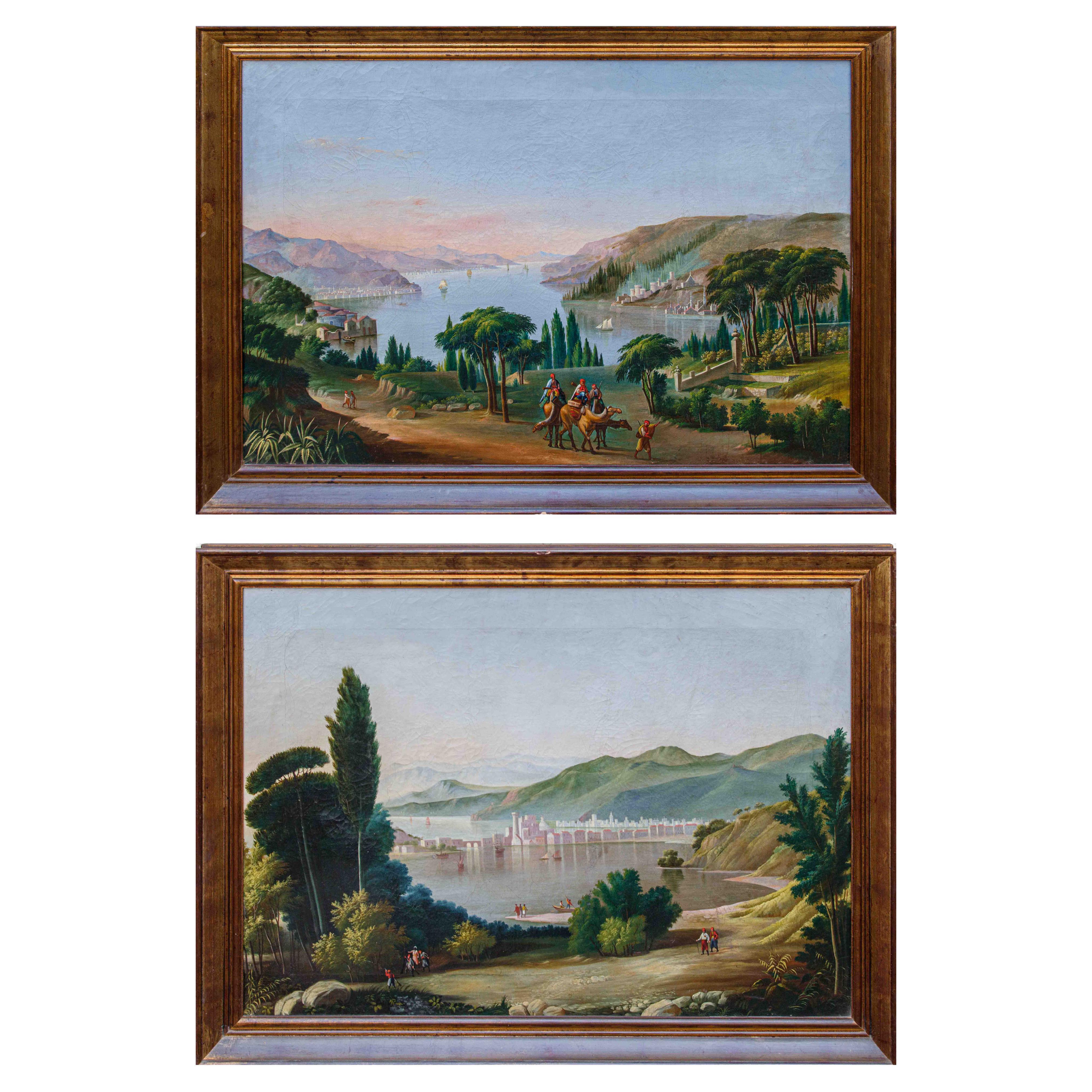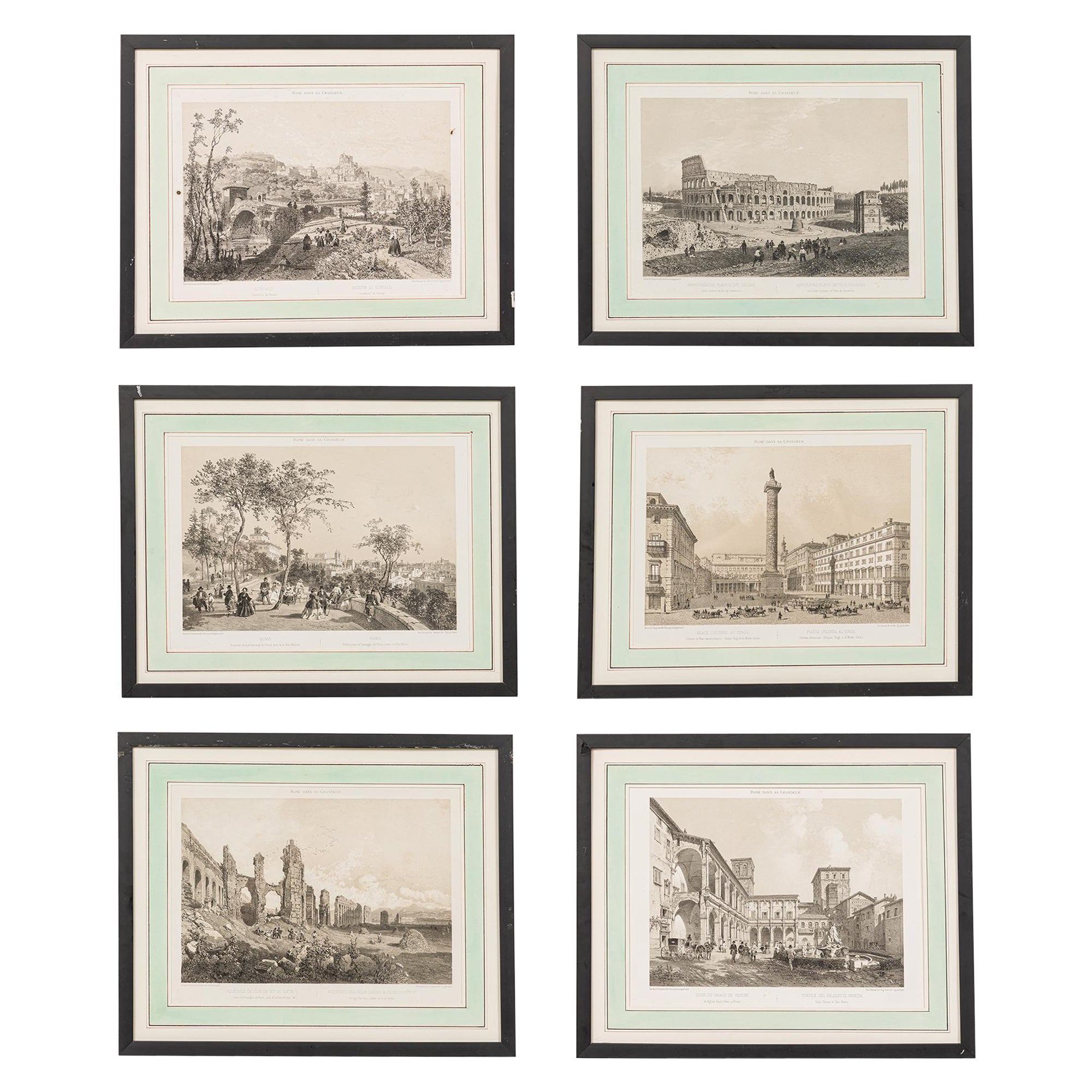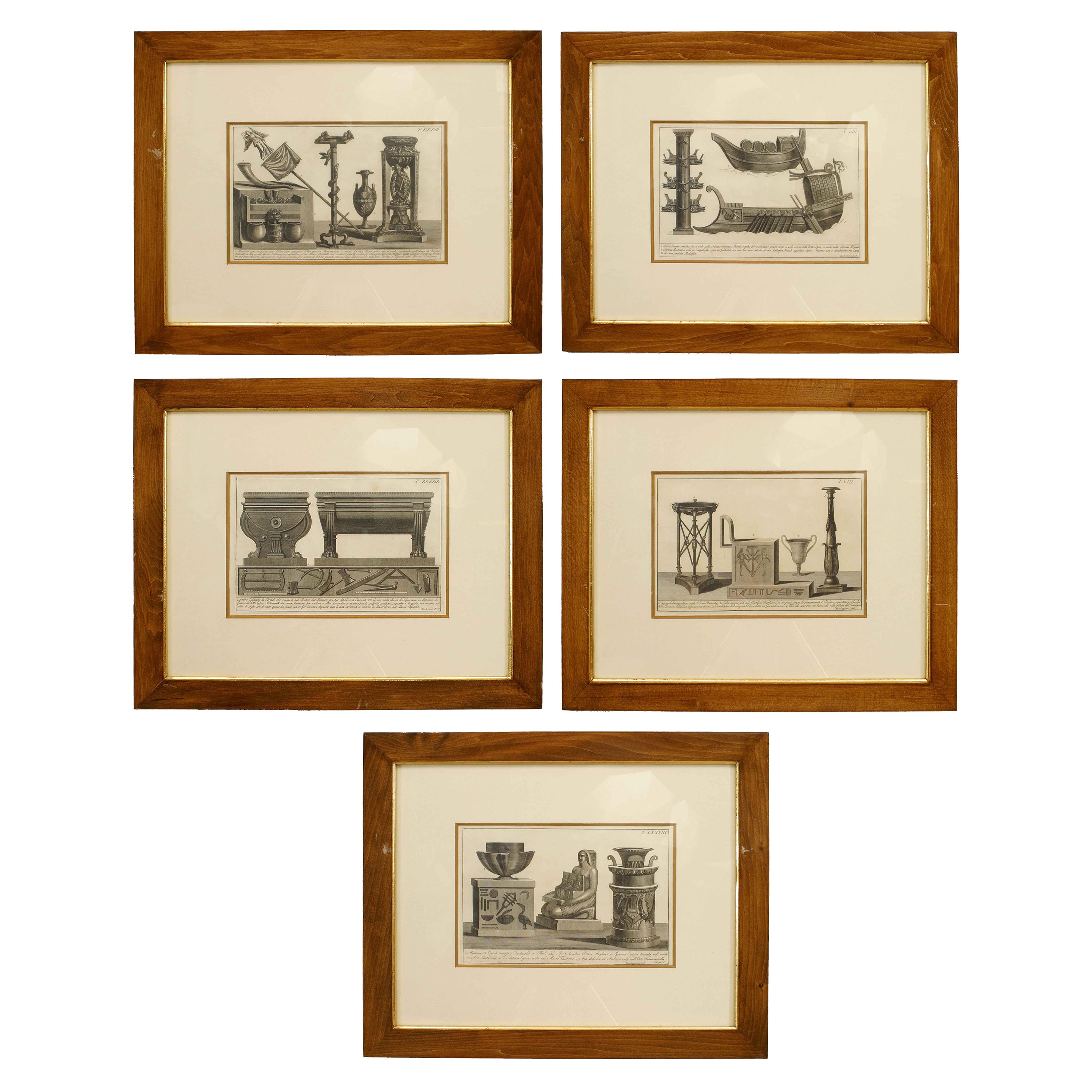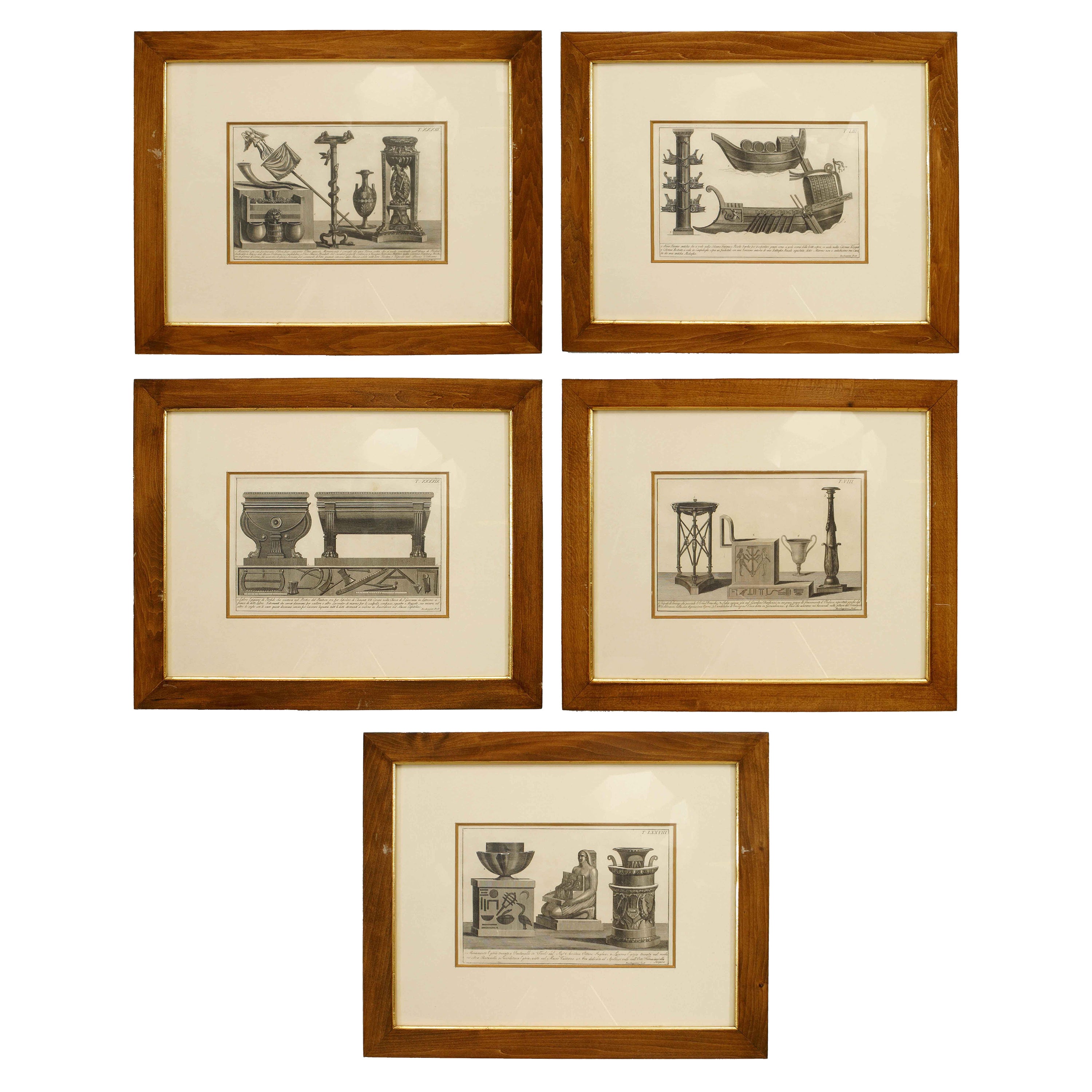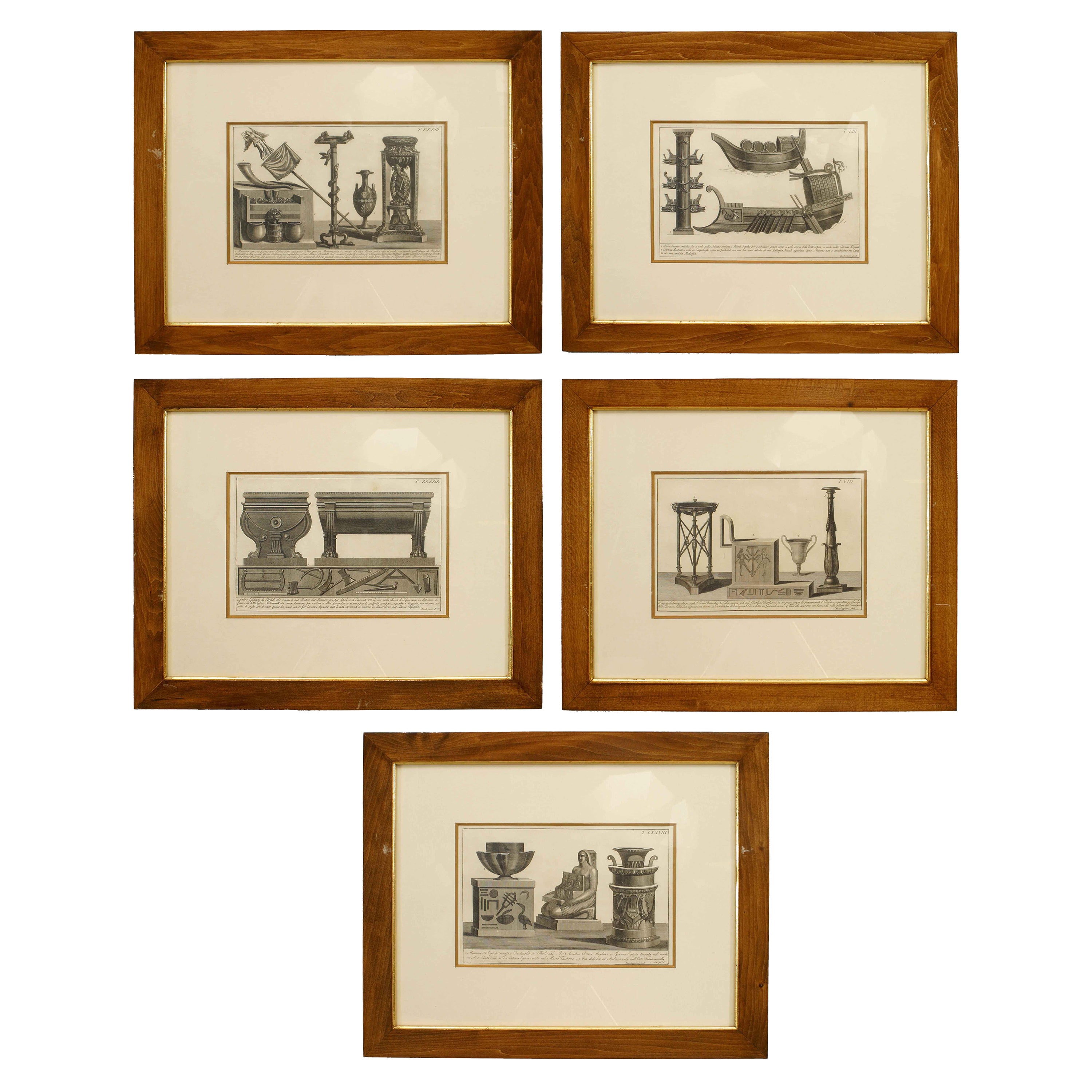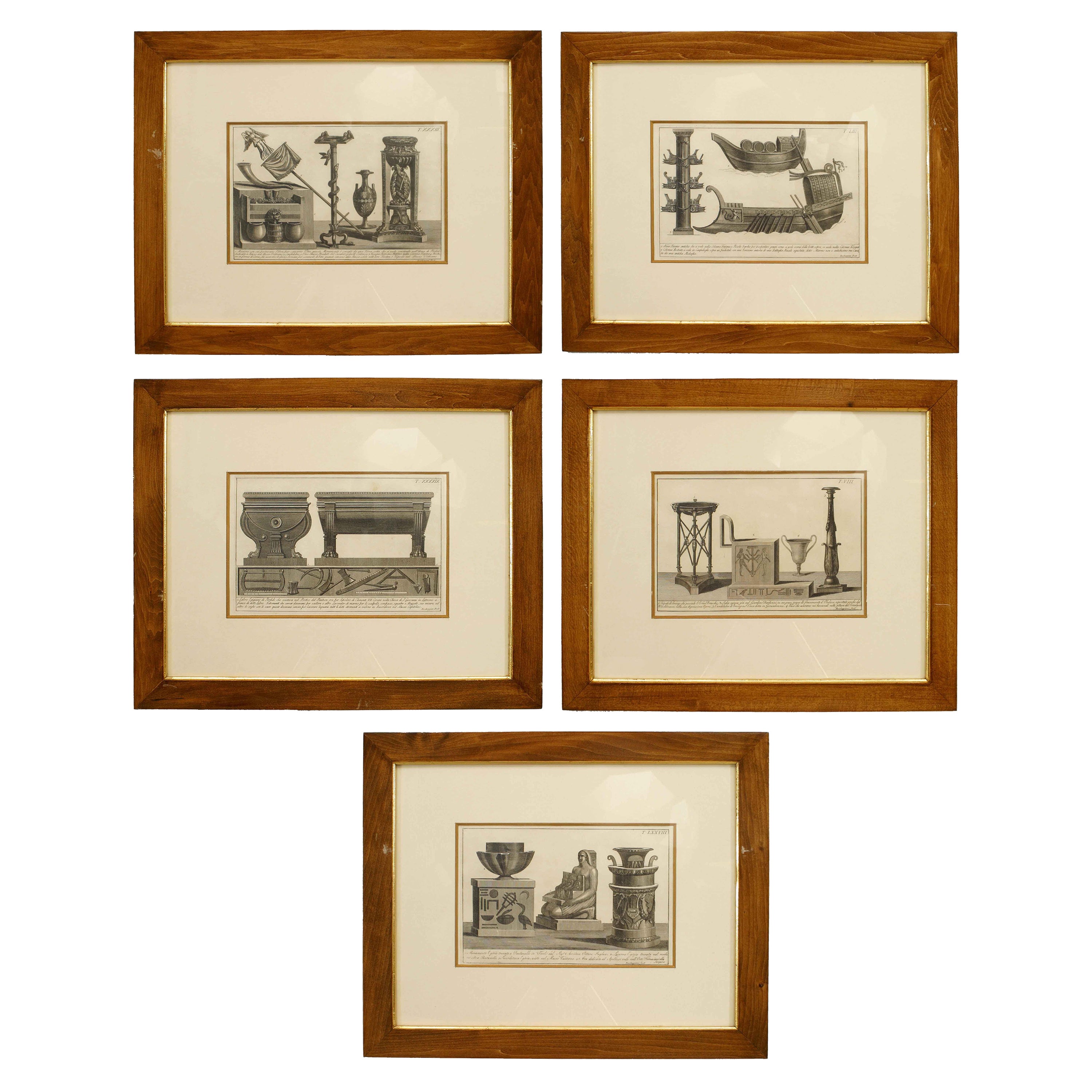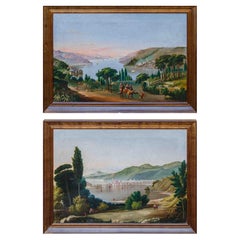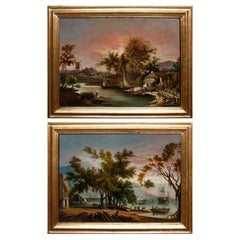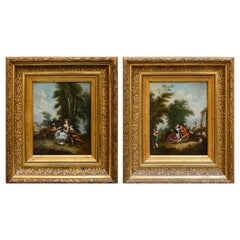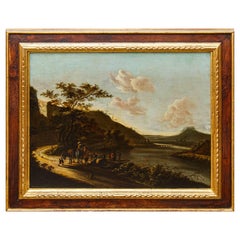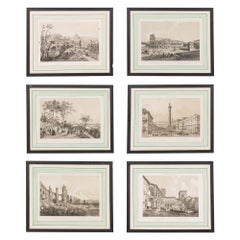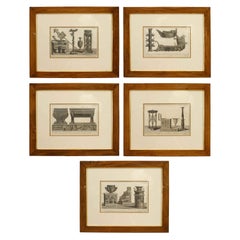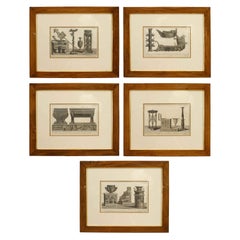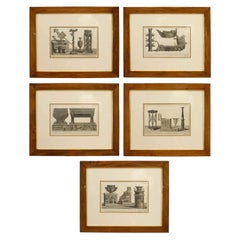Want more images or videos?
Request additional images or videos from the seller
1 of 21
19th century, Eight views of Milan
$10,061.01per item
£7,455.76per item
€8,400per item
CA$13,735.20per item
A$15,279.84per item
CHF 8,009.89per item
MX$186,715.96per item
NOK 101,995.90per item
SEK 96,015.03per item
DKK 63,956.86per item
Quantity
Shipping
Retrieving quote...The 1stDibs Promise:
Authenticity Guarantee,
Money-Back Guarantee,
24-Hour Cancellation
About the Item
19thC
Eight views of Milan
(8) tempera on paper
(6) 16,5x21,56 cm - (1) 21,5x16 cm – (1) 17,5x24 cm
In these eight views, fine watercolor prints enclosed in elegant period frames, some of the most striking views of Napoleonic Milan and its environs are presented. The views represent respectively:
1. Porta Comasina, today's Porta Garibaldi, an obligatory point of passage for the people of Como and Brianza on their way to Milan.
2. The Villa Reale in Milan, also known as Villa Belgioioso or Villa Belgioioso Bonaparte, built between 1790 and 1796 in Milan by architect Leopoldo Pollack, commissioned by Count Ludovico Barbiano di Belgiojoso, adviser to the Austrian emperor, to retire there at the end of his diplomatic and military career. Upon the death of Count Ludovico Belgioioso, the villa was acquired by the government of the Cisalpine Republic, becoming the residence of Napoleon-who was hosted occasionally during visits to Milan-d and of Eugene de Beauharnais viceroy of Italy in 1805, who resided there permanently with his wife, Princess Augusta of Bavaria. The viceregal couple commissioned the major decorative intervention that led to the lavish decoration of the interior of the piano nobile, involving, among others, Andrea Appiani. With the return of Austrian rule over the city, the building became the property of the Austrian Viceroys, being inhabited by, among others, Marshal Josef Radetzky, who stipulated the 1849 Peace of Milan here, which decreed the city's surrender to Austria. After the Second War of Independence it came into the possession of the Savoy Crown. In 1920 it was purchased by the City of Milan, which in 1921 established there the Civic Gallery of Modern Art of Milan, of which it is still the home today.
3. Milan's civic arena, the design of which was drawn up by the well-known architect Luigi Canonica under a commission from Napoleon in 1805: the area was intended to host festivals, events, and celebrations. The shape of the amphitheater was chosen for the building as a reference to the Roman imperial tradition, to which Napoleon explicitly referred. Canonica designed inspired by the Circus of Maxentius, located outside Rome on the Via Appia Antica, perhaps the best preserved of the ancient Roman circuses. The facility was elliptical in shape, with an overall length of 238 meters and a width of 116, and could hold up to 30,000 spectators, or just under a quarter of the entire population of Milan at the time. The grandstand designed by Canonica is distinguished by the presence of the Appiani building, named after the author of the interior pictorial decoration, Andrea Appiani.
4. The triumphal entrance to the classically shaped civic arena.
5. Porta Nuova, one of Milan's six main gates, carved out along the Spanish ramparts, now demolished. Located north of the city in Piazzale Principessa Clotilde, it opens along the road to Monza. In this beautiful view the gate is presented as connoted by the neoclassical arch by Zanoia (1810-1813), erected in the Napoleonic era.
6. The columns of San Lorenzo are an ancient late Roman construction in Milan located in front of the basilica of the same name near the medieval Ticinese gate.
7. Porta Ticinese, named Porta Marengo in Napoleonic times, located south of the city, opened along the road to Pavia. As of the 19th century, the gateway is now characterized by the presence of a neoclassical triumphal arch erected to a design by Cagnola.
8. The façade of the Charterhouse of Pavia: this extraordinary monument, built at the end of the 14th century at the behest of Gian Galeazzo Visconti, the first duke of Milan, turns out to be the perfect synthesis of trends in the Lombard architectural and sculptural tradition of the Renaissance.
The city of Milan and its environs do not enjoy great visual fortune compared to other Italian centers such as Florence, Rome or Venice.The earliest views of Milan turn out to be made between the seventeenth and eighteenth centuries.These are sketches that depict the city's most fascinating views, placing particular emphasis on its religious buildings.We need only think of the views of the churches of San Lorenzo and San Babila by the anonymous Fabricsy and that of the church of San Paolo Converso by Marcantonio dal Re. Providing new life to the visual fortune of Milanese views was the work of the well-known vedutista Bernardo Bellotto, who depicted, in three excellent canvases, the Duomo and the Palazzo dei Giureconsulti, The square in front of the churches of Sant'Eufemia and San Paolo Converso, and the Castello Sforzesco. Presenting in their works the evocative glimpses of the flourishing Milan, first Napoleonic and then Austrian, are the artists serving the Milanese power in the 19th century: we need only think of the works of Migliara, Canella, Mazzola and Cherubin, in the groove of which our views are perfectly channeled.
- Dimensions:Height: 8.27 in (21 cm)Width: 6.3 in (16 cm)Depth: 0.79 in (2 cm)
- Style:Other (Of the Period)
- Materials and Techniques:Paper,Etched
- Place of Origin:
- Period:
- Date of Manufacture:19thC
- Condition:Wear consistent with age and use.
- Seller Location:Milan, IT
- Reference Number:1stDibs: LU5918245409372
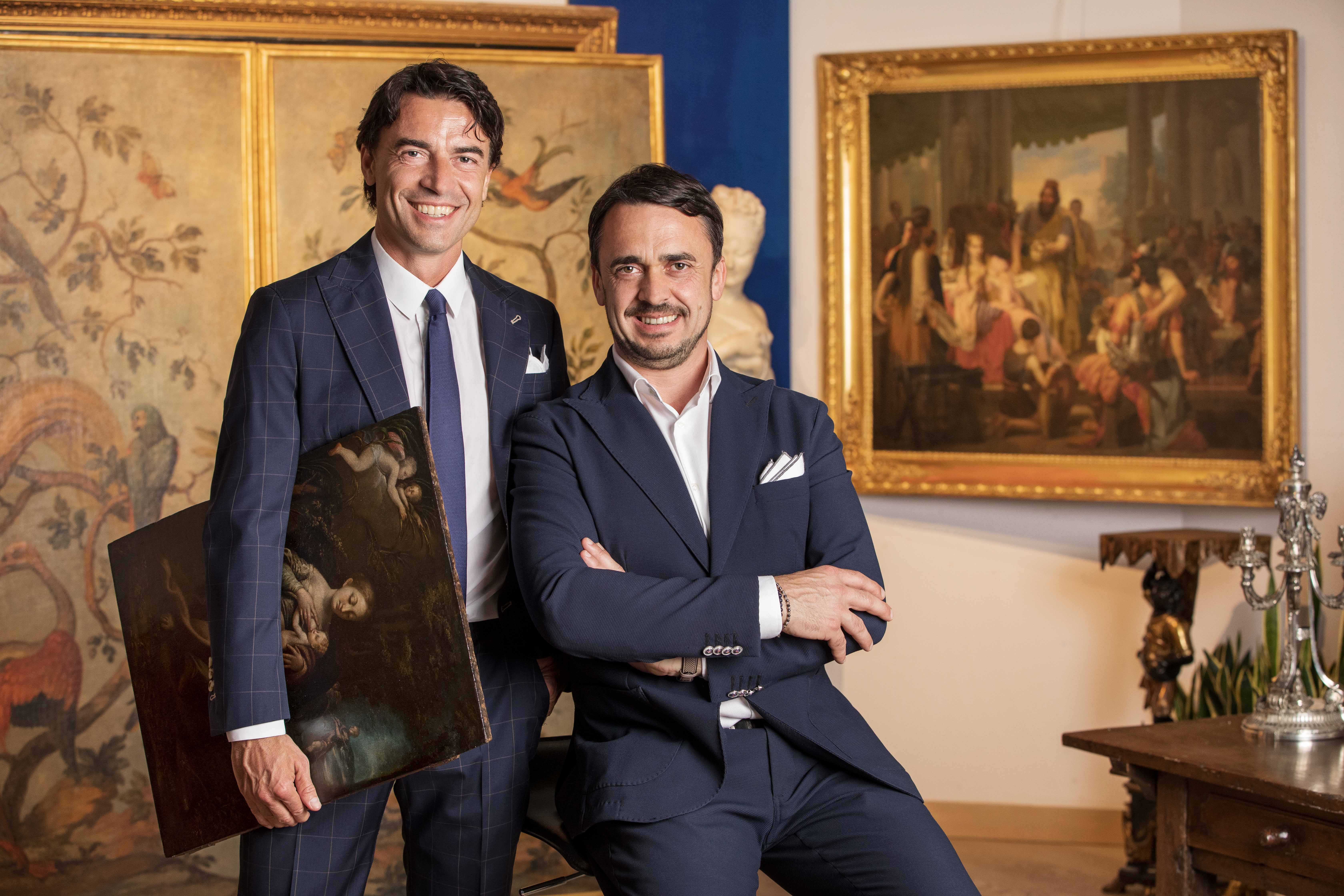
About the Seller
5.0
Vetted Professional Seller
Every seller passes strict standards for authenticity and reliability
Established in 2000
1stDibs seller since 2021
30 sales on 1stDibs
- ShippingRetrieving quote...Shipping from: Milan, Italy
- Return Policy
Authenticity Guarantee
In the unlikely event there’s an issue with an item’s authenticity, contact us within 1 year for a full refund. DetailsMoney-Back Guarantee
If your item is not as described, is damaged in transit, or does not arrive, contact us within 7 days for a full refund. Details24-Hour Cancellation
You have a 24-hour grace period in which to reconsider your purchase, with no questions asked.Vetted Professional Sellers
Our world-class sellers must adhere to strict standards for service and quality, maintaining the integrity of our listings.Price-Match Guarantee
If you find that a seller listed the same item for a lower price elsewhere, we’ll match it.Trusted Global Delivery
Our best-in-class carrier network provides specialized shipping options worldwide, including custom delivery.More From This Seller
View All19th Century, Views of the Bosphorus
Located in Milan, IT
19th Century
Views of the Bosphorus
Oil on canvas, 75.5 x 105 cm
Framed, 89 x 118 cm
In the full nineteenth-century taste for travel and Orientalism, the two splendid views captu...
Category
Antique 19th Century Turkish Other Paintings
Materials
Canvas
19th century, pair of landscapes
Located in Milan, IT
19thC
Pair of Landscapes
(2) Oil on canvas, 44 x 58 cm
With frame 58 x 71 cm
Category
Antique 19th Century Italian Other Paintings
Materials
Canvas
$4,311 / set
18th century, French School, Gallant scenes
Located in Milan, IT
18th century, French School
Gallant Scenes
(2) Oil on panel, 24 x 19 cm
Framed, 44 x 36 cm
This pair of works attributable to the artistic context of the French eighteenth centu...
Category
Antique 18th Century and Earlier Italian Other Paintings
Materials
Wood
17th century, Landscape with characters
Located in Milan, IT
XVII Century
Landscape with characters
Oil on canvas, 72 x 92 cm
Framed, 95 x 112 cm
Category
Antique Late 17th Century Dutch Other Paintings
Materials
Canvas
17th century, Landscape with characters
Located in Milan, IT
XVII Century
Landscape with characters
Oil on canvas, 72 x 92 cm
Framed, 95 x 112 cm
Category
Antique 18th Century and Earlier Dutch Other Paintings
Materials
Canvas
River landscape of late 18th century - early 19th century
Located in Milan, IT
Late 18th - early 19th century
River Landscape
Oil on canvas, 64 x 96 cm - with frame 77 x 10 cm
The canvas in question is an example of Vedutist painting at the turn of the 18th an...
Category
Antique Late 18th Century Italian Paintings
Materials
Canvas
You May Also Like
group of 6 Italian engravings
Located in Queens, NY
SET of 6 Italian Neo-classic (19/20th Century) celedon and white matted engravings showing landscapes and classic architectural building in black frames (PRICED AS SET)
Category
Antique 19th Century Italian Neoclassical Paintings
Materials
Paper
$6,800 / set
Italian Neo-Classic Military Objects Print
Located in Queens, NY
Italian Neo-classic style print of various military arms, armor, and objects matted in stained walnut frame (part of a set of 15; associated pieces: 040101A-040101O)
Category
20th Century Italian Neoclassical Paintings
Materials
Walnut
Italian Neo-Classic Military Objects Print
Located in Queens, NY
Italian Neo-classic style print of various military arms, armor, and objects matted in stained walnut frame (part of a set of 15; associated pieces: 040101A-040101O)
Category
20th Century Italian Neoclassical Paintings
Materials
Walnut
Italian Neo-Classic Military Objects Print
Located in Queens, NY
Italian Neo-classic style print of various military arms, armor, and objects matted in stained walnut frame (part of a set of 15; associated pieces: 040101A-040101O))
Category
20th Century Italian Neoclassical Paintings
Materials
Walnut
Italian Neo-Classic Military Objects Print
Located in Queens, NY
Italian Neo-classic style print of various military arms, armor, and objects matted in stained walnut frame (part of a set of 15; associated pieces: 040101A-040101O)
Category
20th Century Italian Neoclassical Paintings
Materials
Walnut
Italian Neo-Classic Military Objects Print
Located in Queens, NY
Italian Neo-classic style print of various military arms, armor, and objects matted in stained walnut frame (part of a set of 15; associated pieces: 040101A-040101O)
Category
20th Century Italian Neoclassical Paintings
Materials
Walnut
